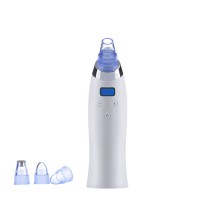-
Phone
+86- 111****
-
Address
Boluo county dragon Lotus Lake Village Town Industrial Park, China
-
E-mail
How to choose the rolling brush for photovoltaic solar cleaning machines?
1、 Rolling brush material
The material of the rolling brush is directly related to its service life and cleaning effect. Common rolling brush materials include nylon, PP, PBT, etc.
1. Nylon material: The roller brush made of nylon has a smooth surface, high hardness, and relatively long service life, making it suitable for cleaning the dirt and dust on the surface of photovoltaic panels. Meanwhile, the nylon roller brush has strong corrosion resistance and a longer service life.
2. PP material: Compared with nylon material, PP material has a relatively low hardness and is mainly suitable for cleaning relatively fine dirt and dust.
3. PBT material: PBT material has moderate hardness, strong adaptability, is easy to clean, and is less prone to deformation after collision.
Overall, nylon roller brushes have high hardness, good corrosion resistance, and long service life, making them suitable for routine cleaning work; The rolling brush hardness of PP material is relatively low, making it suitable for fine cleaning. PBT material has moderate hardness, good anti-corrosion performance, and a wide range of applications. Therefore, when selecting a rolling brush, it is necessary to choose the appropriate material for the rolling brush according to the actual scene.
2、 Rolling brush hardness
Rolling brush hardness refers to the hardness of the bristles of the rolling brush. The commonly used hardness levels include soft, moderate, hard, and superhard, which are suitable for different cleaning tasks.
1. Soft bristle roller brush: Soft bristle roller brush is suitable for cleaning photovoltaic panels with a relatively flat surface and will not cause damage to the surface, but the cleaning effect may be limited.
2. Moderate brush: The moderate brush has moderate hardness and is suitable for cleaning various types of photovoltaic panels, making it the mainstream choice in the market.
3. Hard bristle brush: Hard bristle brushes have a high hardness and are suitable for cleaning stubborn stains, but may cause damage to the surface of photovoltaic panels.
4. Ultra hard bristle brush: Ultra hard bristle brushes are mainly used to clean relatively hard surfaces, such as concrete or stones, and are generally not suitable for cleaning photovoltaic panels.
Therefore, the selection of rolling brush hardness should be based on the actual situation, matching the material and surface condition of the photovoltaic panel to ensure cleaning effect and service life.
3、 Rolling brush length
The length of the rolling brush is usually calculated in millimeters, and an appropriate length of rolling brush is selected based on the size and shape of the photovoltaic panel to ensure that every corner of the photovoltaic panel can be fully cleaned.
1. Long rolling brush: Long rolling brush is suitable for cleaning large area photovoltaic panels and can quickly and efficiently clean the entire photovoltaic panel. However, for small and narrow photovoltaic panels, it may not achieve complete cleaning effect.
2. Short rolling brush: Short rolling brush is suitable for cleaning small areas of photovoltaic panels, making it easy to operate and able to clean to difficult to reach positions.
The length of the rolling brush should be selected based on the specifications and cleaning needs of the photovoltaic panel. For example, for larger photovoltaic panels, it is recommended to use a long rolling brush for cleaning, while for smaller photovoltaic panels, a short rolling brush can achieve the cleaning effect.
4、 Roll brush diameter
The diameter of the rolling brush is usually calculated in millimeters, and a suitable diameter rolling brush is selected based on the size, material, and cleaning task of the photovoltaic panel to ensure the cleaning effect and speed.
1. Small diameter rolling brush: Small diameter rolling brush is suitable for cleaning photovoltaic panels with small areas and not deep necks. The cleaning effect is good, but the work efficiency is relatively low.
2. Large diameter rolling brush: Large diameter rolling brush is suitable for cleaning photovoltaic panels with large areas and deep necks. It has high cleaning efficiency, but may cause certain surface damage.
Therefore, when selecting the diameter of the rolling brush, a suitable diameter rolling brush should be selected based on the actual situation to ensure cleaning effect and work efficiency.
In summary, selecting the appropriate rolling brush is the key to using a photovoltaic solar cleaning machine, and should be selected based on the size, material, shape, cleaning requirements of the photovoltaic panel, as well as the material, hardness, length, and diameter of the rolling brush. At the same time, in order to ensure the service life and cleaning effect of the rolling brush, it is necessary to regularly clean and maintain the rolling brush.
